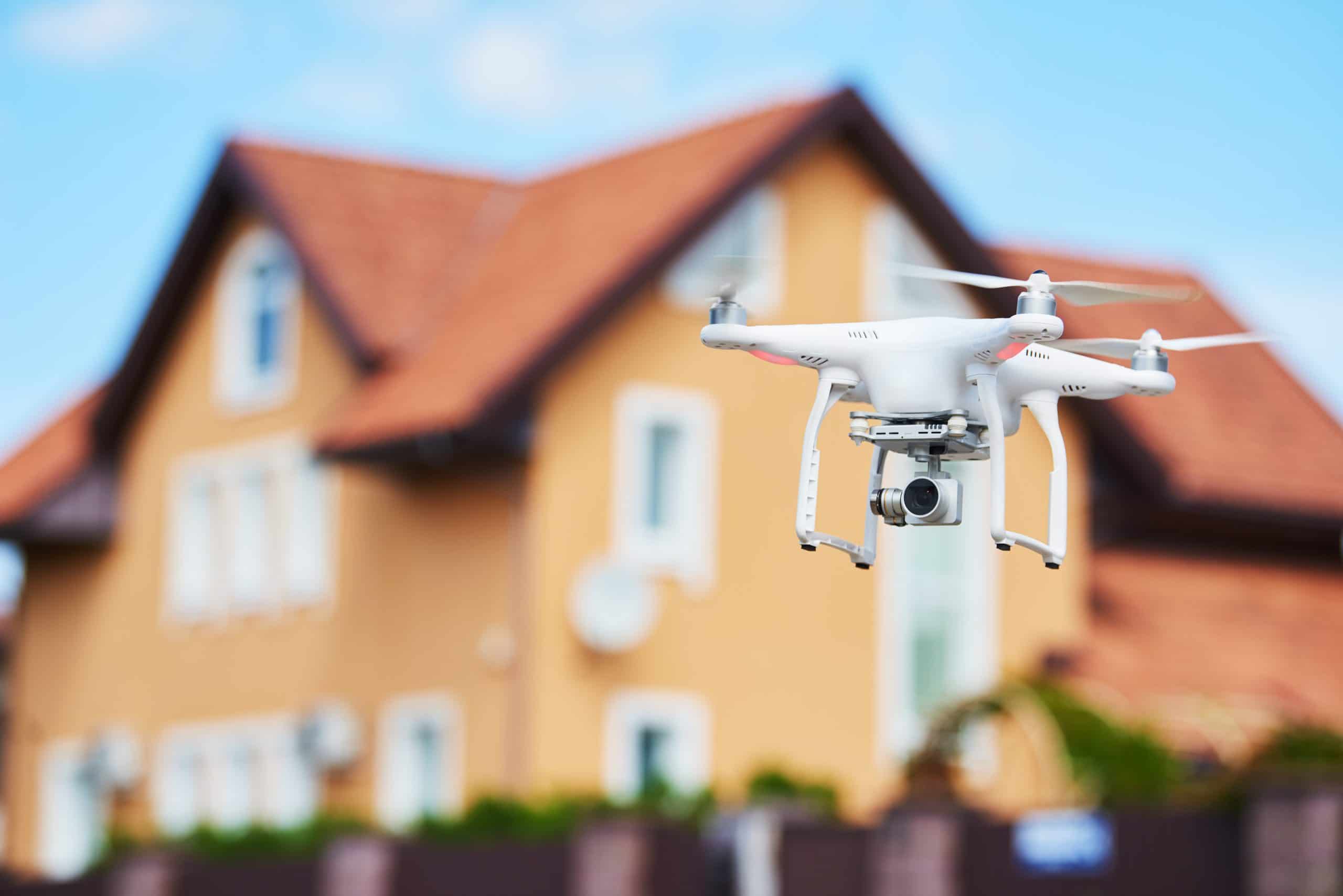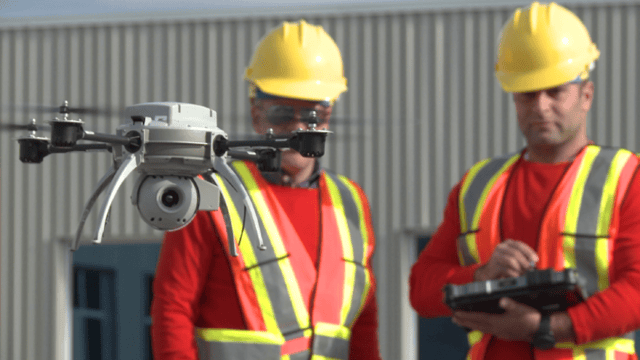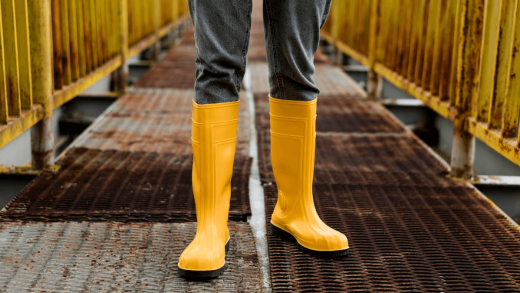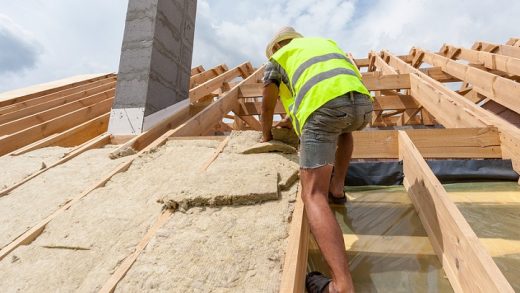
Drone Roof Inspections
Technology has revolutionized the way we conduct inspections, and drone technology is no exception. With the advent of drones, roof inspections have become more efficient, accurate, and cost-effective.
Using aerial photography capabilities, drones enable a comprehensive view of rooftops, capturing detailed images and videos from angles that were previously unattainable.
But what are the specific benefits of drone roof inspections?
1. Enhanced accuracy: Drones provide high-resolution imagery, allowing inspectors to identify even the smallest roof issues with precision.
2. Improved safety: By eliminating the need for manual inspections, drones mitigate the risk of falls and accidents for inspectors.
3. Efficient construction: Drones can monitor construction progress, ensuring that roofs are built according to exact specifications and preventing costly rework.
Advantages of Drone Roof Inspections
Drones have revolutionized the way roof inspections are conducted. With the use of aerial technology, drone roof inspections offer numerous benefits in terms of safety, efficiency, and accuracy. Here are some advantages of using drones for roof inspections:
- Increased Safety: Drone inspections eliminate the need for manual roof inspections, reducing the risk of accidents and injuries for construction workers or inspectors. It allows them to assess the roof condition from a safe distance, minimizing the chances of falls or roof collapses.
- Efficiency: Drone roof inspections are much faster compared to traditional methods. Drones can cover large areas in a relatively short time, allowing inspectors to assess multiple roofs in a single day. This saves time and resources for both inspectors and property owners.
- Accurate and Detailed Data: Drones equipped with high-resolution cameras or thermal imaging sensors capture detailed images and videos of the roof. This data helps inspectors identify areas of concern, such as leaks, cracks, or structural damage. The accurate data provided by drones enables better decision-making for repairs or maintenance.
- Cost-Effective: Drone roof inspections can be a cost-effective solution for property owners. They eliminate the need for expensive scaffolding or aerial lifts, reducing the overall cost of inspections. Additionally, early detection of roof issues through drone inspections can prevent costly repairs in the future.
- Enhanced Documentation: Drones provide a visual record of the roof condition during inspections. This documentation can be used for insurance claims, property evaluations, or future reference purposes. The visual evidence captured by drones eliminates disputes and provides comprehensive documentation for all stakeholders.
Drone roof inspections offer significant advantages in terms of safety, efficiency, accuracy, cost-effectiveness, and documentation. By leveraging drone technology, property owners and inspectors can effectively assess roof conditions and make informed decisions for repairs and maintenance.
Time-saving
The use of drones in roof inspections offers a time-saving solution for both safety and efficiency. Traditional roof inspections typically require manual labor and can take hours or even days to complete. With the advancements in technology and the use of aerial drones, roof inspections can now be done in a fraction of the time.
Using a drone for roof inspections eliminates the need for workers to climb ladders or scaffolding to access the roof. This significantly reduces the risk of falls and other injuries associated with working at heights. Drones can easily navigate and capture high-resolution images and videos of the entire roof, providing a detailed and comprehensive inspection.
Instead of spending hours manually inspecting every inch of the roof, a drone can quickly scan the entire area and identify any potential issues or areas of concern. This allows for timely repairs and maintenance to be carried out, preventing further damage and saving both time and money in the long run.
In addition to the time saved in conducting the inspections, drones also offer an efficient method for collecting and analyzing data. The images and videos captured by the drones can be quickly processed and analyzed using specialized software. This allows for easy identification of defects or damage, as well as the ability to generate detailed reports and documentation.
Overall, the use of drones in roof inspections provides a time-saving solution that improves both safety and efficiency. With their aerial capabilities, drones offer a quick and comprehensive method for inspecting roofs, reducing the time and resources required for traditional methods of inspections. Whether it’s for construction, photography, or any other industry that requires roof inspections, drones have become an essential tool.
Cost-effective
With the advancements in drone technology, roof inspections have become more accurate, efficient, and cost-effective. Drones offer a safe and efficient way to inspect roofs, eliminating the need for manual inspections which can be time-consuming and pose risks to workers.
Drones equipped with high-resolution cameras and aerial photography capabilities provide detailed images and videos of roofs. This technology allows for a comprehensive inspection of the entire roof, including hard-to-reach areas and potential problem spots.
By using drones for roof inspections, you can save both time and money. Manual inspections can be labor-intensive and require a larger workforce, which can increase costs. Drones, on the other hand, can cover large areas in a shorter amount of time, reducing labor costs and increasing efficiency.
In addition to saving money, drone roof inspections also provide accurate and reliable data. The high-resolution imagery captured by drones allows for a thorough analysis of the roof’s condition, identifying any structural issues, leaks, or damage. This helps in making informed decisions regarding maintenance or repairs.
Whether it’s for residential or commercial buildings, drones offer a cost-effective solution for roof inspections. By using drone technology, you can improve the accuracy, speed up the inspection process, and ensure the safety of your workers.
| Benefits of drone roof inspections: |
|---|
| Avoids the need for manual inspections |
| Reduces labor costs |
| Provides high-resolution imagery |
| Identifies potential problems |
| Improves decision-making regarding maintenance or repairs |
Increased Safety
When it comes to roof inspections, safety is always a primary concern. Traditional methods of roof inspections often put inspectors at risk of accidents and injuries due to the need to climb ladders or access hazardous areas. However, with the advent of aerial photography technology and drones, roof inspections can now be performed with increased safety.
Drones equipped with cameras and advanced sensors can easily reach the roof and capture high-resolution images and videos without the need for inspectors to physically access the roof. This not only eliminates the risk of falls or injuries but also reduces the overall time required to inspect a roof.
Using drones for roof inspections also allows inspectors to identify potential hazards and risks before they become a larger issue. By capturing detailed images of the roof, inspectors can spot cracks, leaks, or weak areas that may not be easily visible from the ground. This early detection can help prevent further damage and costly repairs.
The use of drones in the construction industry has significantly improved the safety of roof inspections. It allows inspectors to assess the condition of a roof from a safe distance, reducing the chances of accidents and injuries. By avoiding the need for physical access to the roof, drones provide a safer alternative for both inspectors and property owners.
Detailed Data Collection
The use of drone technology has revolutionized the way in which roof inspections are conducted. This innovative approach allows for detailed and accurate data collection, providing numerous benefits for the construction industry.
- Technology: Drones are equipped with high-resolution cameras and advanced sensors, enabling them to capture high-quality images and videos of roofs from various angles and distances.
- Accuracy: With their precise navigation systems and stabilization mechanisms, drones can capture accurate and reliable data, ensuring that every aspect of the roof is thoroughly examined.
- Construction Safety: Traditional roof inspections often involve human inspectors climbing ladders or scaffolding, which can be hazardous. Drones eliminate the need for manual inspection, reducing the risk of accidents and injuries.
- Efficiency: Drone inspections are quick and efficient, allowing for a faster turnaround time. This enables construction projects to progress smoothly, minimizing delays and keeping costs under control.
- Data Visualization: The data collected by drones can be processed and analyzed using specialized software. This enables contractors and inspectors to visualize and interpret the data, making it easier to identify potential issues and plan for necessary repairs or maintenance.
- Comprehensive Inspections: Drones can easily access hard-to-reach areas of the roof, such as slopes, chimneys, or skylights, which are difficult and unsafe for humans to inspect. This ensures that the entire roof is thoroughly examined, minimizing the risk of undetected problems.
- Photography and Videography: The images and videos captured by drones provide clear and detailed views of the roof, allowing for better documentation and visualization of its condition. This is particularly useful for insurance claims or legal purposes.
In conclusion, drone technology offers a multitude of benefits for roof inspections, including detailed data collection, improved accuracy, enhanced safety, and cost optimization. By leveraging this innovative approach, the construction industry can elevate the quality and efficiency of its roof inspections.
Techniques for Drone Roof Inspections
Using drone technology for roof inspections has revolutionized the way inspections are done in the construction industry. With the accuracy and efficiency offered by drones, aerial inspections have become a preferred method for assessing the condition of roofs.
Here are some techniques that make drone roof inspections advantageous:
- Improved Safety: Drone inspections eliminate the need for manual roof inspections, reducing the risk of falls and accidents for inspectors.
- Aerial Photography: Drones capture high-resolution images and videos of roofs, providing detailed visual evidence of any damage or potential issues.
- Efficiency: Drones can cover large areas quickly, allowing inspectors to assess multiple roofs in a shorter time frame.
- Accessibility: Drones can access difficult-to-reach areas, such as rooftops with steep pitches or hazardous environments.
- Cost-effectiveness: Drone inspections reduce the need for expensive equipment and manpower typically required for traditional inspections.
Overall, drone roof inspections offer a reliable and innovative solution for assessing roof conditions. By leveraging aerial technology, accuracy and efficiency are greatly improved, ultimately saving time and resources in the construction industry.
Aerial Photography
With advances in technology, aerial photography has become an essential tool for a variety of industries. From roof inspections to construction site surveys, drones have revolutionized the way we capture images from the air.
When it comes to roof inspections, aerial photography offers a range of benefits. Drones can provide close-up views of roofs, capturing high-resolution images that can help identify potential issues such as leaks, cracks, or missing shingles. This technology allows inspectors to get a better understanding of the condition of a roof without the need for an on-site visit.
The use of drones for aerial inspections also enhances safety. Traditional roof inspections often involve climbing ladders or accessing hard-to-reach areas, which can be dangerous. By utilizing drones, inspectors can easily navigate the roof from a safe distance, minimizing the risk of accidents.
Aerial photography is not limited to roof inspections. It is also widely used in the construction industry to monitor project progress, identify potential hazards, and document important milestones. Drones can capture detailed images and videos of construction sites from various angles, providing valuable visual documentation for project managers and stakeholders.
Whether it’s for roof inspections or construction site surveys, aerial photography plays a crucial role in improving efficiency and accuracy. By harnessing the power of drone technology, businesses can save time and resources while ensuring the safety of their employees.
Thermal Imaging
Thermal imaging is a groundbreaking technology that has revolutionized roof inspections. Utilizing advanced infrared photography, drones equipped with thermal imaging cameras can capture detailed thermal images of roofs, providing valuable insights into their condition.
When it comes to roof inspections, traditional methods often fall short in terms of accuracy and safety. Climbing ladders or scaffolding can be time-consuming and hazardous for inspectors. However, with drones equipped with thermal imaging, inspections can be done quickly and safely from the ground.
Thermal imaging technology allows drones to detect and visualize heat patterns on roofs. By capturing infrared radiation, these drones can identify areas of concern such as leaks, moisture damage, or insulation issues. These heat signatures are then translated into detailed images, enabling inspectors to spot potential problems with precision.
One of the key benefits of thermal imaging is its ability to identify hidden issues that may not be visible to the naked eye. It can uncover anomalies and defects in the roof structure that traditional inspections might miss. By relying on thermal imaging, inspectors can provide more accurate and comprehensive reports to clients, allowing them to make informed decisions about roof repairs or replacements.
Furthermore, thermal imaging inspections are non-destructive, meaning they do not damage the roof or require invasive methods. Inspectors can quickly scan large areas without physically touching the roof, minimizing the risk of accidents or further damage to the construction.
In addition to accuracy and safety, thermal imaging inspections offer another significant advantage: cost-effectiveness. By using drones equipped with thermal imaging cameras, inspections can be completed in a fraction of the time compared to manual inspections. This not only saves time but also reduces labor costs, making it a cost-effective option for roofing contractors and property owners.
In conclusion, thermal imaging is a powerful tool for roof inspections. It combines the benefits of drone technology with the accuracy of thermal imagery, providing detailed insights into a roof’s condition. By utilizing this advanced technology, inspectors can ensure comprehensive and efficient inspections, ultimately benefiting both contractors and property owners.
D Mapping
With the advancements in drone technology, roof inspections have become safer and more accurate than ever before. D Mapping is a leading provider of drone photography and mapping services for construction and roof inspections.
Our state-of-the-art drone technology allows us to capture high-resolution aerial images, providing detailed visual information of any roof. This enables our clients to identify potential issues and make informed decisions about repairs or replacements.
At D Mapping, safety is our top priority. Our skilled drone pilots are trained to follow all necessary safety protocols, ensuring a safe and reliable inspection process. By using drones for roof inspections, we eliminate the need for workers to climb ladders or scaffoldings, reducing the risk of accidents and injuries.
Our drone mapping services utilize advanced mapping technology to create 2D and 3D models of roofs. These models provide a comprehensive view of the entire roof, allowing for accurate measurements and precise analysis of its condition. This level of accuracy can help identify even the smallest imperfections or damage.

By choosing D Mapping for your roof inspections, you can benefit from:
- Improved safety for workers and technicians
- More accurate and detailed inspections
- Faster turnaround time for inspection reports
- Reduced costs compared to traditional inspection methods
- Access to advanced mapping technology
Don’t compromise on the quality of your roof inspections. Contact D Mapping today to schedule a drone roof inspection and experience the benefits of our cutting-edge technology.
Best Practices for Drone Roof Inspections
Drone photography has revolutionized the way roof inspections are conducted in the construction industry. With the advancements in technology, aerial drones have become an essential tool for accurate and efficient roof inspections.
Here are some best practices for drone roof inspections:
- Plan and prepare: Before the drone flight, carefully plan and prepare the inspection. This includes assessing the area, checking weather conditions, and ensuring the drone is in good working condition.
- Use high-quality equipment: Invest in a reliable drone and camera system to capture clear and detailed footage of the roof. High-resolution images and videos are crucial for accurate assessments.
- Follow safety protocols: Always prioritize safety during the inspection. Follow all local regulations and guidelines for drone operations, and ensure the area is clear of people and obstacles.
- Perform a thorough inspection: Fly the drone at various altitudes and angles to capture a comprehensive view of the roof. Focus on areas prone to damage, such as chimneys, gutters, and vents.
- Take advantage of advanced features: Use the drone’s advanced features, such as zooming capabilities and thermal imaging, to identify issues that may not be visible to the naked eye.
- Document findings: Take detailed notes and annotate the captured images or videos to document any findings or areas of concern. This will be useful for further analysis and decision-making.
- Collaborate with experts: Share the inspection results with roofing experts or engineers to get their professional opinion and recommendations for any necessary repairs or maintenance.
- Regular inspections: Conduct regular drone roof inspections to monitor the condition of the roof over time and identify potential problems before they escalate.
By following these best practices, drone roof inspections can provide accurate data, streamline the inspection process, and improve overall safety and efficiency in the construction industry.
Pre-flight Checklist
Before conducting a drone roof inspection, it is essential to ensure the safety of the operation. This pre-flight checklist will help you guarantee a successful and secure mission:
- Check local regulations: Familiarize yourself with the rules and regulations governing drone operations in your area.
- Inspect the construction: Before launching the drone, inspect the building’s structure for any potential hazards or obstacles.
- Test the technology: Ensure that the drone’s firmware, software, and other systems are up to date and functioning correctly.
- Prepare the drone: Check the battery levels, camera settings, and propellers to ensure optimal performance during the roof inspection.
During the actual inspection, it is crucial to maintain a high level of accuracy and efficiency. Here are some best practices to follow:
- Plan your flight path: Determine the best route to capture comprehensive images and data of the roof.
- Use photography settings: Adjust the camera settings to capture clear and detailed images that will aid in the inspection process.
- Take multiple shots: Capture multiple angles and perspectives to ensure a thorough analysis of the roof’s condition.
- Monitor weather conditions: Keep an eye on weather forecasts and avoid flying in adverse weather conditions that may compromise the safety of the drone or the accuracy of the inspection.
- Review and analyze data: After the inspection, carefully analyze the collected data to identify any issues or areas of concern.
By following this pre-flight checklist and adhering to best practices, you can conduct safe and accurate drone roof inspections, providing valuable information for construction and maintenance purposes.
Weather Conditions and Limitations
When it comes to aerial inspections, weather conditions play a crucial role in ensuring the accuracy and safety of the process. Different weather conditions can affect the performance of the drone and the quality of the inspections. Here are some important considerations regarding weather conditions and limitations:
- Wind: Strong winds can make it difficult to control the drone and can compromise the accuracy of the inspection. It is important to assess wind speed and direction before conducting a roof inspection. Generally, wind speeds of up to 15 mph are considered safe for drone operations.
- Rain and Snow: Moisture can damage the drone’s electronics and affect its stability during flight. It is recommended to avoid flying a drone in rainy or snowy conditions to ensure the safety and integrity of the equipment.
- Temperature Extremes: Extreme temperatures, both hot and cold, can affect the performance of the drone’s battery and other components. It is important to operate the drone within its specified temperature range to avoid any malfunctions or accidents.
- Visibility: Poor visibility due to fog, haze, or low lighting conditions can make it challenging to capture clear and accurate roof inspection images. It is best to conduct inspections during optimal lighting and visibility conditions for the best results.
By taking weather conditions and limitations into account, drone operators can ensure the safety of the equipment, maintain accuracy in the inspections, and capture high-quality aerial images for roof inspections in the construction and roofing industry.
Equipment Maintenance
Ensuring the accuracy and reliability of your drone equipment is crucial for successful drone roof inspections. Proper maintenance and care of your equipment will not only enhance the performance but also extend its lifespan.
To capture high-quality aerial photography and carry out thorough inspections, it is important to regularly clean your drone’s camera lens. Dust and dirt can hinder the clarity of the images, making it difficult to accurately assess the condition of the roof.
In addition to cleaning, it is advisable to inspect the drone’s propellers before each flight. Damaged or worn-out propellers can affect the stability and maneuverability of the drone, posing a safety risk. Replace any faulty propellers to ensure smooth and secure flights.
The construction industry continues to embrace drone technology for roof inspections due to its efficiency and cost-effectiveness. To ensure the safety of the drone and the surrounding area during inspections, it is crucial to inspect the drone’s overall condition regularly.
Regularly check for any loose or damaged parts, such as landing gears, motor mounts, or the drone’s body. Tighten or replace any loose or damaged parts to prevent accidents or equipment failure during flights.
Furthermore, it is essential to keep the drone’s battery in optimal condition. Before each flight, check the battery status and ensure it is fully charged. Monitor the battery’s performance and replace it if it no longer holds a charge or shows signs of degradation.
To keep track of your drone’s maintenance schedule, consider creating a checklist that includes cleaning tasks, propeller inspection, overall condition check, and battery maintenance. Regularly update and follow this checklist to maintain your drone’s performance and ensure safe and accurate roof inspections.
Skill and Training Requirements
When it comes to conducting drone roof inspections, certain skills and training are essential to ensure accuracy, safety, and efficiency. The use of aerial photography technology combined with the specific demands of a construction site and the intricacies of a roof require specialized knowledge and expertise. Here are some key requirements for those involved in drone roof inspections:
- Drone piloting: Operators must have a deep understanding of drone flight controls and be proficient in maneuvering the drone in different weather conditions and challenging environments. They should also know how to optimize drone performance for capturing high-quality images and videos.
- Construction knowledge: Familiarity with various construction materials, building techniques, and potential structural issues is crucial. This knowledge helps operators identify and document any roof defects, such as leaks, cracks, or deterioration.
- Roof expertise: Understanding the different types of roofs, their components, and common problem areas is necessary to conduct thorough inspections. Operators should be able to assess the condition of roof coverings, flashing details, gutters, and skylights accurately.
- Safety protocols: Drone operators must adhere to strict safety guidelines to ensure the well-being of themselves, construction workers, and the general public. They should be trained in emergency procedures and risk management, including how to navigate obstacles and avoid potential hazards.
- Image analysis: Being able to analyze the obtained aerial images and videos is essential for identifying and documenting any issues accurately. Operators should be familiar with image editing software and have an eye for detail.
- Communication: Effective communication skills are vital to work closely with construction professionals, roofers, and other stakeholders. Operators must be able to explain their findings clearly and offer actionable recommendations for repairs or maintenance.
By having the necessary skills and training, drone operators can perform comprehensive and reliable roof inspections that provide valuable insights to construction teams.
Communication and Coordination
Effective communication and coordination are vital for the success and safety of drone roof inspections. Whether it is a residential or commercial property, proper communication ensures that all stakeholders are on the same page and can make informed decisions.
The use of drones for aerial photography inspections in the construction industry is revolutionizing the way roofs are assessed. With advanced technology and skilled operators, drones provide a safer and more efficient method for conducting inspections.
During a drone roof inspection, the pilot communicates with the ground control team to ensure that the flight is conducted safely and smoothly. This coordination allows the pilot to focus on capturing high-quality aerial photographs and videos, while the ground team monitors the drone’s position and ensures all safety protocols are followed.
In addition, effective communication is essential between the drone operator, the client, and any other relevant parties involved in the inspection process. This includes providing detailed instructions on the scope of the inspection, specific areas of concern, and any relevant safety precautions that need to be taken.
By maintaining clear and open lines of communication, everyone involved in the drone roof inspection can work together to identify potential issues and develop appropriate solutions. This collaborative approach helps to ensure that the inspection is thorough, efficient, and meets the specific needs of the client.
Overall, effective communication and coordination play a crucial role in the success of drone roof inspections. By leveraging the power of technology and working together as a team, the benefits of this innovative approach can be fully realized.
Data Management and Reporting
Effective data management and reporting are crucial components of any successful roof inspection process. With the advancements in aerial photography and drone technology, inspections can now be conducted with greater accuracy, efficiency, and safety.
By using drones equipped with high-resolution cameras, inspectors can capture detailed images and videos of roofs from various angles and heights. This allows them to identify potential issues and assess the overall condition of the roof with immense precision. The data collected during the inspection can then be processed and organized for analysis.
Utilizing specialized software, inspectors can generate comprehensive reports that include detailed visual documentation, measurements, and annotations. These reports provide valuable insights into the current state of the roof, highlighting areas that require maintenance or repairs. Additionally, the data can be compared to previous inspections to identify any changes or trends over time.
With the help of data management and reporting tools, construction companies and property owners can make informed decisions regarding roof maintenance, repair, or replacement. The ability to access and analyze accurate data improves project planning, budgeting, and asset management.
Furthermore, data management and reporting enhance communication between stakeholders. Inspectors can easily share the reports with clients and collaborate on finding the most suitable solutions for any identified issues. This streamlines the decision-making process and ensures that all parties are on the same page.
| Improved accuracy in assessing roof condition |
| Efficient processing and organization of inspection data |
| Comprehensive reports with visual documentation |
| Insights into maintenance and repair needs |
| Better project planning and budgeting |
| Streamlined communication between stakeholders |
In conclusion, effective data management and reporting play a vital role in the success of drone roof inspections. The combination of advanced technology and accurate data analysis allows for better decision-making, improved maintenance strategies, and enhanced communication within the construction industry.
Questions and answers:
What is the benefit of using drones for roof inspections?
Using drones for roof inspections offers many benefits. First, it allows for a safe and efficient way to inspect roofs without the need for climbing ladders or scaffolding. Drones can easily access hard-to-reach areas and provide a close-up view of the roof’s condition. This can save time and money compared to traditional methods. Additionally, using drones can reduce the risk of accidents and injuries that may occur during manual inspections.
What are the best techniques for drone roof inspections?
There are several techniques that can be used for drone roof inspections. One technique is to fly the drone in a systematic way, covering the entire roof area. This ensures that no part of the roof is overlooked. Another technique is to adjust the camera settings to capture high-resolution images or videos of the roof. This can help in identifying any damage or issues that may be present. It is also important to consider the weather conditions and fly the drone during a clear day with minimal wind for optimal results.
What are the best practices for drone roof inspections?
When conducting drone roof inspections, it is important to follow certain best practices. First, make sure to obtain any required permits or permissions before flying the drone. It is also crucial to maintain a safe distance from people and property during the flight. Additionally, always inspect the drone and its equipment before each flight to ensure everything is in proper working order. Lastly, it is recommended to have a checklist of specific areas to inspect on the roof to ensure a thorough examination.
Can drones be used for roof inspections in all types of weather?
Drones can be used for roof inspections in many types of weather, but there are certain conditions to consider. It is generally best to conduct drone inspections during clear days with minimal wind. Rain or foggy conditions can affect the visibility and stability of the drone, making it more difficult to capture accurate images or videos. However, there are drones equipped with weather-resistant features that can withstand mild rain or wind if necessary.
What are some other benefits of using drones for roof inspections?
In addition to safety and efficiency, using drones for roof inspections offers other benefits. Drones can provide detailed and high-resolution images or videos of the roof, allowing for closer examination and better documentation. This can be useful for insurance claims, roof assessments, or general maintenance records. Drones can also cover large areas quickly, making them ideal for inspecting multiple roofs or properties in a shorter amount of time. Overall, using drones can enhance the accuracy and effectiveness of roof inspections.



